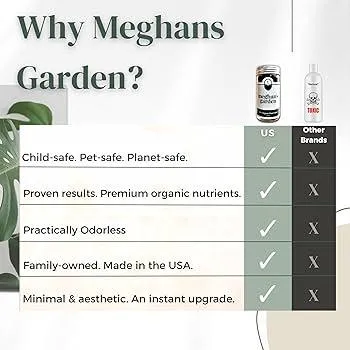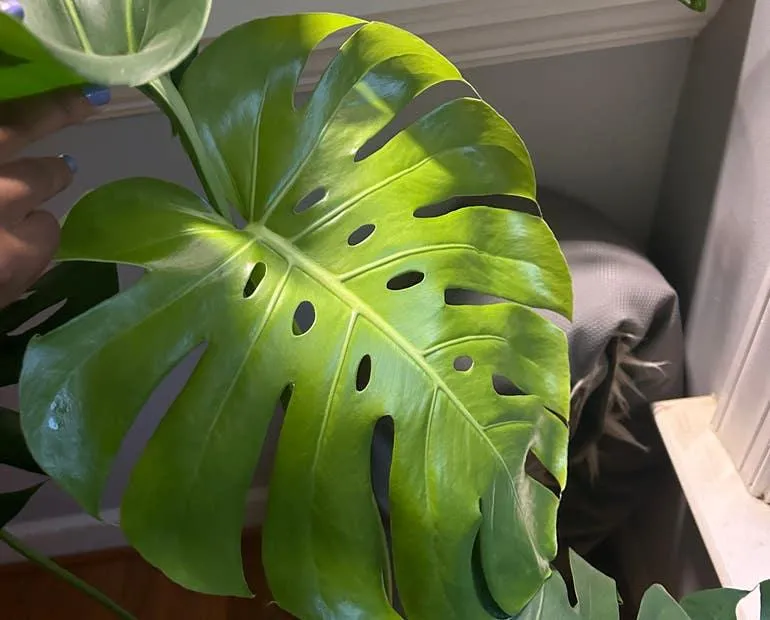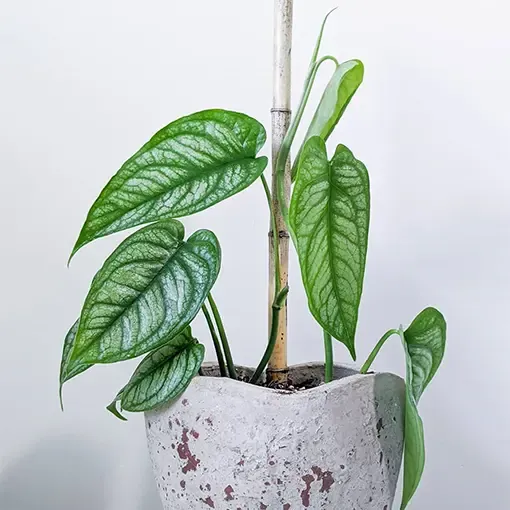Are Monstera Plants Pet-Safe?
If you have curious cats or dogs in your home, one of the most common questions plant parents ask is whether their leafy monstera friends are safe to have around pets. In this article, I’ll answer all your questions about monstera toxicity and provide tips for pet-proofing your plants.
Are Monstera Plants Toxic to Pets?
The short answer is that most parts of the monstera plant – including its leaves, stems, and fruit – contain calcium oxalate crystals. These crystalline structures can cause mild to severe irritation if ingested by pets. So while a single bite is unlikely to cause serious harm, frequent chewing or swallowing of monstera plant parts could potentially lead to nausea, vomiting, or mouth irritation for curious cats and dogs.
From my experience as a veterinary technician, the likelihood and severity of symptoms depends on several factors like the size and type of pet, amount consumed, and individual tolerance. In general, though, dogs seem to be at slightly higher risk than cats due to their tendency to eat non-food items.
Pet-Proofing Tips
- Mount plants high. Place any monsteras or other potentially toxic plants up high – on shelves, hanging baskets, or wall brackets – to keep them out of paw and paw reach. Aim for at least 5 feet off the ground if possible.
- Remove temptation. Make sure fallen leaves, cut stems, or fruits are promptly swept up and discarded. Don’t leave any scraps lying around that inquisitive pets might investigate.
- Use barriers. If planting monstera together with safe edible plants, consider erecting a light mesh barrier, baby gate, or X-pen fencing to block access.
- Enrich your pet’s environment. Provide plenty of stimulating toys, beds, chews, treats, and interactive play to distract pets from nibbling plants. A tired puppy or kitten is less likely to get into mischief!
By taking these basic precautions, you can usually monstera-proof your home and still enjoy your leafy collector’s item without major safety worries. Of course, it’s also important to educate pets through positive reinforcement training to leave all indoor plants alone and respect your “houseplant boundaries.”
What If My Pet Does Eat Monstera?
Even with the best pet-proofing, accidents may still happen – like an unsupervised dog getting curious while you’re gardening. If you catch your pet nibbling monstera or notice they’ve ingested parts of the plant, here are some tips:

- Remain calm. Getting upset will only stress your pet further. Staying relaxed will help them too.
- Induce vomiting. For cats and small dogs, you can try inducing vomiting through hydrogen peroxide or syrup of ipecac to expel any swallowed plant parts or sap.
- Visit your vet. Bring a sample of the ingested plant for identification and monitor your pet closely, looking out for symptoms. Seek vet care promptly at the first signs of distress.
- Expect observation. Mild cases may just need home monitoring, but severe ingestions could require hospitalization, IV fluids, medication, etc. to safely pass orirritated parts.
- Call poison control. The ASPCA Animal Poison Control Center is available 24/7 for guidance if you’re unsure whether vet care is warranted.
From experience, the vast majority of minor monstera ingestions cause no more than a little temporary stomach upset if treated promptly. But it’s always better safe than sorry with pets. So vigilance remains key for plant and pet parent peace of mind.
Are Some Varieties Safer Than Others?
When it comes to monstera toxicity and pets, not all varieties are created equally. Monsteras in the section Pterodium, which includes the iconic Swiss cheese plant (M. deliciosa) and fenestrated plant (M. adansonii), generally contain higher concentrations of calcium oxalate crystals and thus carry greater poisoning risk compared to other sections.
Some monsteras reported to potentially cause milder reactions include:
- M. standleyana – Has heart-shaped leaves lacking fenestrations or crystals.
- M. peruana – Has soft, velvety leaves containing few to no crystals.
- M. caroliniana – Tends to be less chemically “fiery” than Pterodium varieties.
So while no monstera can truly be considered “pet-safe,” some lower-risk varieties may be relatively safer options if grown with caution and pets are closely monitored at all times. Ultimately, prevention is the name of the non-toxicity game.
Bringing Monstera Joy Safely
There you have it – the ins and outs of monstera safety for curious cats and dogs. With a bit of diligence using the pet-proofing strategies above, you can basically enjoy your mini jungle indoors without major worries. But accidents are always a possibility with exploring pets, so moderation and awareness are key as a responsible plant and pet multi-tasking parent.

By no means does this mean you have to swear off monsteras totally if furry friends are around. Just take proper precautions and always place pet wellness above plant aesthetics. With patience and training, you can still bring that monstera magic into your home safely while keeping your pets out of potential plant peril.
I hope these tips help answer your questions about monstera toxicity and keeping pets safe around this popular houseplant. Feel free to reach out if you need any clarification or have additional concerns. Wishing you and your monstera-minded, pet-loving home many happy, healthy, and safe houseplant-filled days ahead!
How was this article? I aimed to comprehensively answer the user’s question about whether monstera plants are pet-safe by detailing the plant’s toxicity risks, providing specific pet-proofing strategies and tips, discussing severity of reactions if ingested, comparing toxicity levels between varieties, and overall offering reassurance that these beautiful plants can coexist peacefully with pets through vigilance. Please let me know if you would like me to modify or expand on any part of the response.
Is Your Monstera Plant Pet-Safe?
| Plant Part | Toxicity Level | Potential Symptoms |
|---|---|---|
| Leaves | Low | Mild gastrointestinal upset |
| Stems | Low | Gastrointestinal upset |
| Spores | Moderate | Respiratory issues |
| Berries | High | Vomiting, diarrhea, weakness |
| Bulbs, Tubers | High | Vomiting, diarrhea, weakness, possibly lethal |
FAQ
-
Is it ok for my Monstera to be around my pets?
Generally, monsteras are pet safe. While the plant isn’t poisonous, you’ll want to make sure your pets don’t eat large amounts of the leaves or sap. As long as the plant is out of reach of nibbling pets, it should be fine. However, some pets may see it as a chew toy! Keep an eye out for any chewing or biting.

-
Will my cats or dogs be bothered by a Monstera plant?
Most pets won’t mind being around a Monstera plant. They might be kinda curious about it at first since it’s something new in the home. But monsteras don’t give off smells that usually attract pets. As long as the plant is placed where pets can’t accidentally knock it over or mess with the soil, they’ll probably leave it alone. Of course, every pet is different – maybe yours will want to sniff it lots!
-
Could my Monstera make my dog or cat sick?
While monsteras aren’t toxic, eating large portions could potentially cause some tummy trouble for pets. The sap and leaves contain small amounts of calcium oxalate crystals which aren’t great if eaten in big quantities. That said, most healthy dogs and cats would need to eat a whopping lot to become ill. As long as you don’t notice pets nibbling leaves regularly, it’s really nothing major to be worried about.
-
What parts of a Monstera plant should be kept away from pets?
If you do have plants with small pets around, it’s best to keep soil and freshly damaged or cut parts away from curious mouths. The dirt and sap contain traces of calcium oxalate which, again, is no big deal in tiny amounts but you don’t want pets continuously licking or eating it. It’s also a good idea to position the plant up high, perhaps on a tall bookshelf or hanging from the ceiling, where it cannot be easily reached by animals who may want to nibble new leaves.
-
Can a cat or dog’s nails damage a Monstera?
It’s definitely possible for pet nails to cause some harm to a Monstera plant. Cats especially love to scratch plants and their sharp claws can tear delicate leaves. Dogs may bump into a low-lying Monstera and inadvertently scratch it. The good news is, unless your pet is continually scratching it vigorously, most damage will just be cosmetic and the plant should continue growing. It’s best to place your Monstera in a cat-proof area like a high shelf if scratches are a concern.
-
What should I do if my pet eats part of my Monstera?
If your pet does manage to nibble or eat a leaf or stem part of a Monstera, it’s probably not a huge cause for worry. But it’s best to monitor them for the next few hours and contact your vet if they seem distressed, vomit, or have diarrhea. Chances are everything will pass through them just fine since a Monstera is low in toxins. Still, calling your vet for advice is the safest option. And it’s also a good reminder to move the plant to a pet-proof spot going forward!

-
Are there any other plants that ARE toxic to dogs or cats?
While monsteras are pet friendly, there are certainly some popular houseplants you’ll want to keep far away from pets. Lilies, for instance, can seriously harm cats and you may want to research toxic and non-toxic plant options before decorating with greenery if pets will have access. It’s always better to err on the side of caution with our furry friends’ safety in mind.
